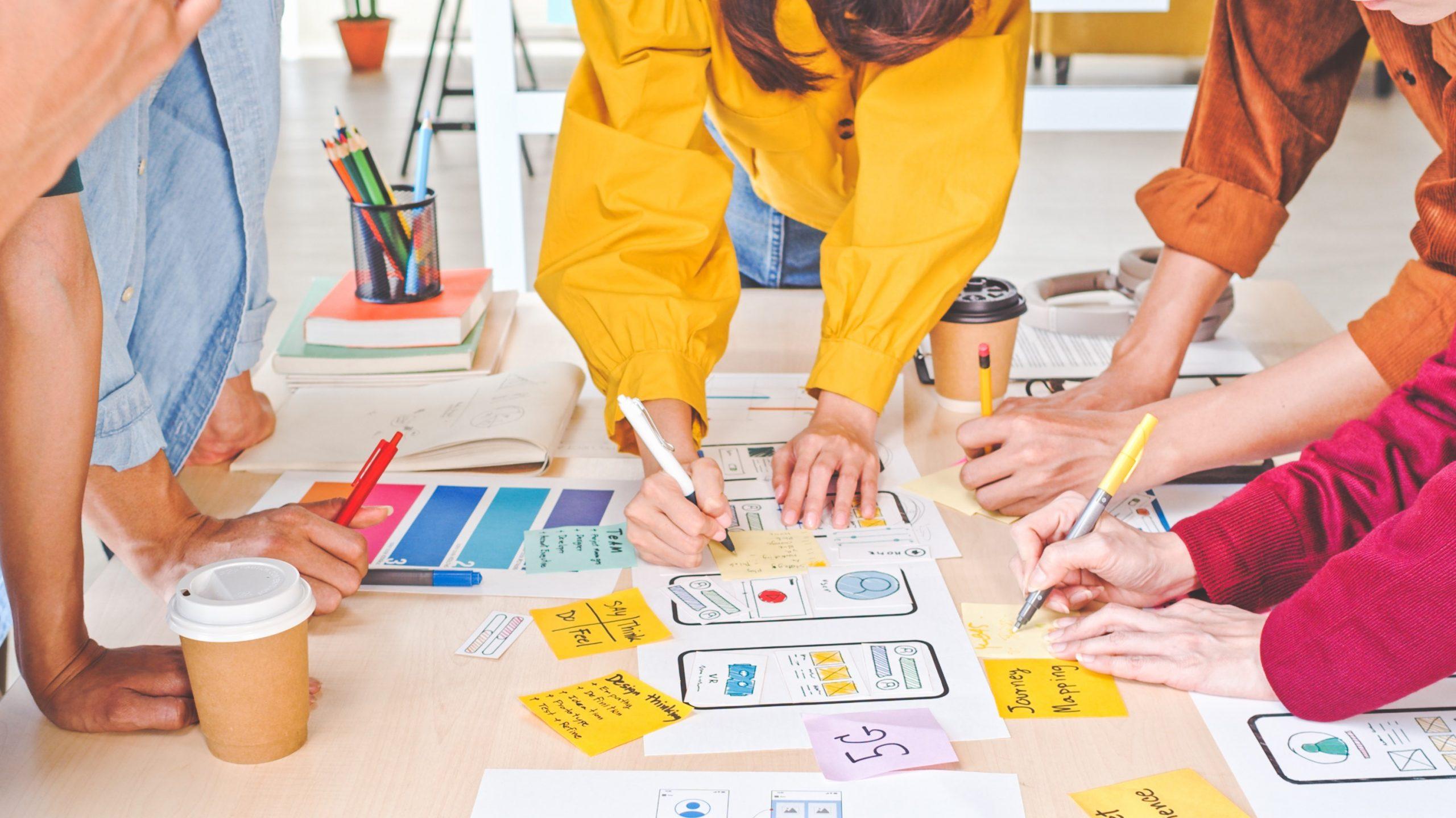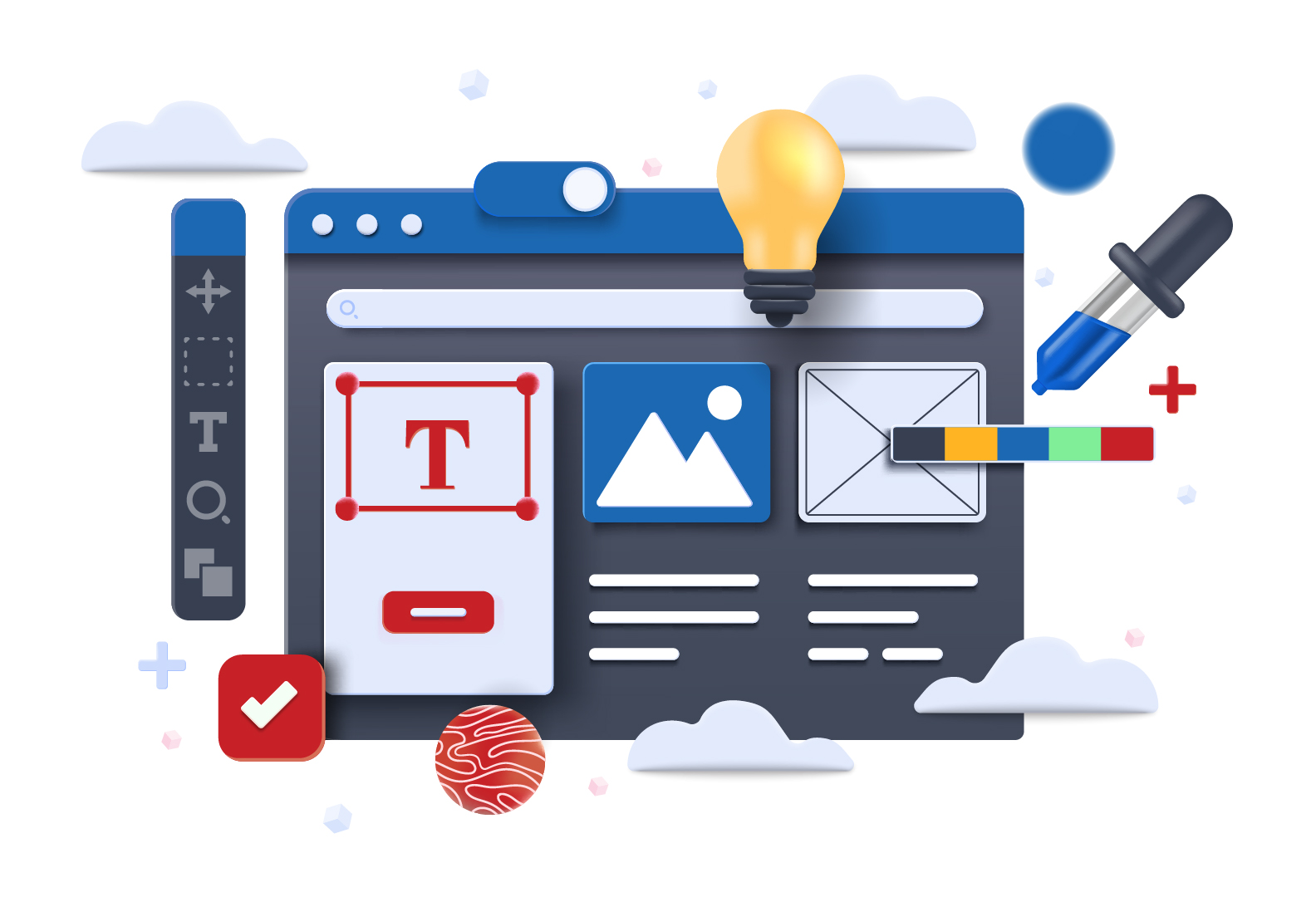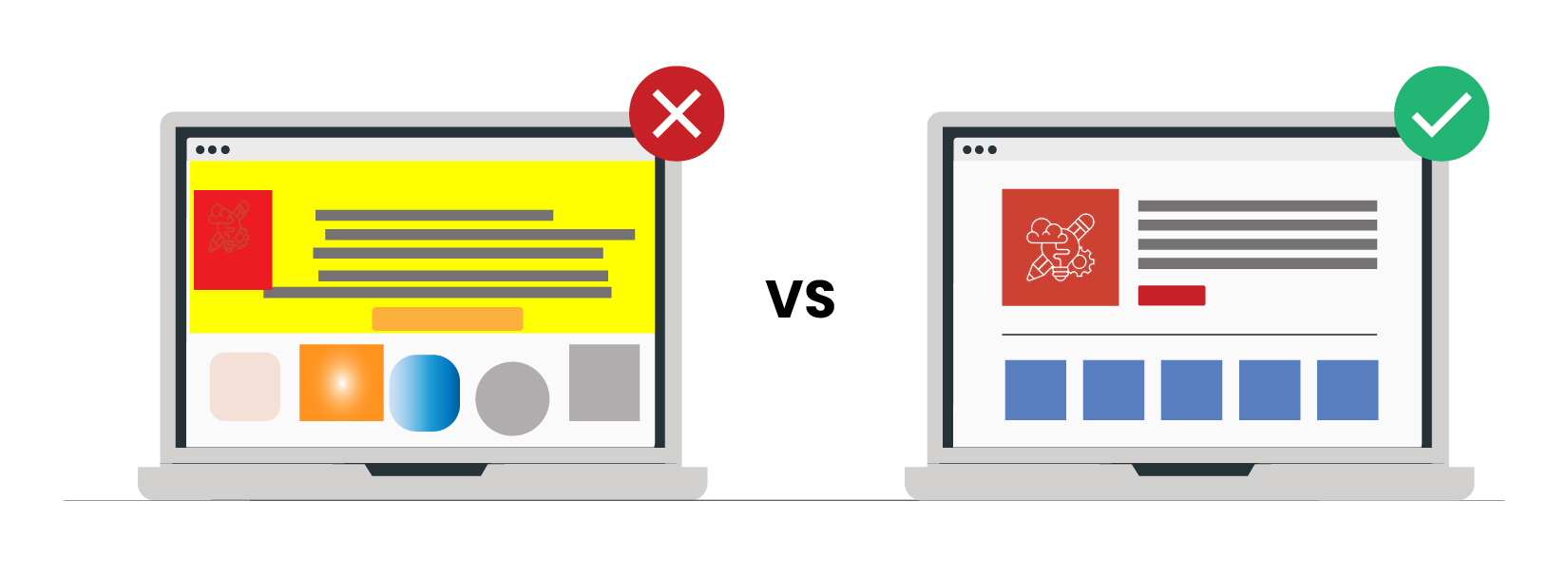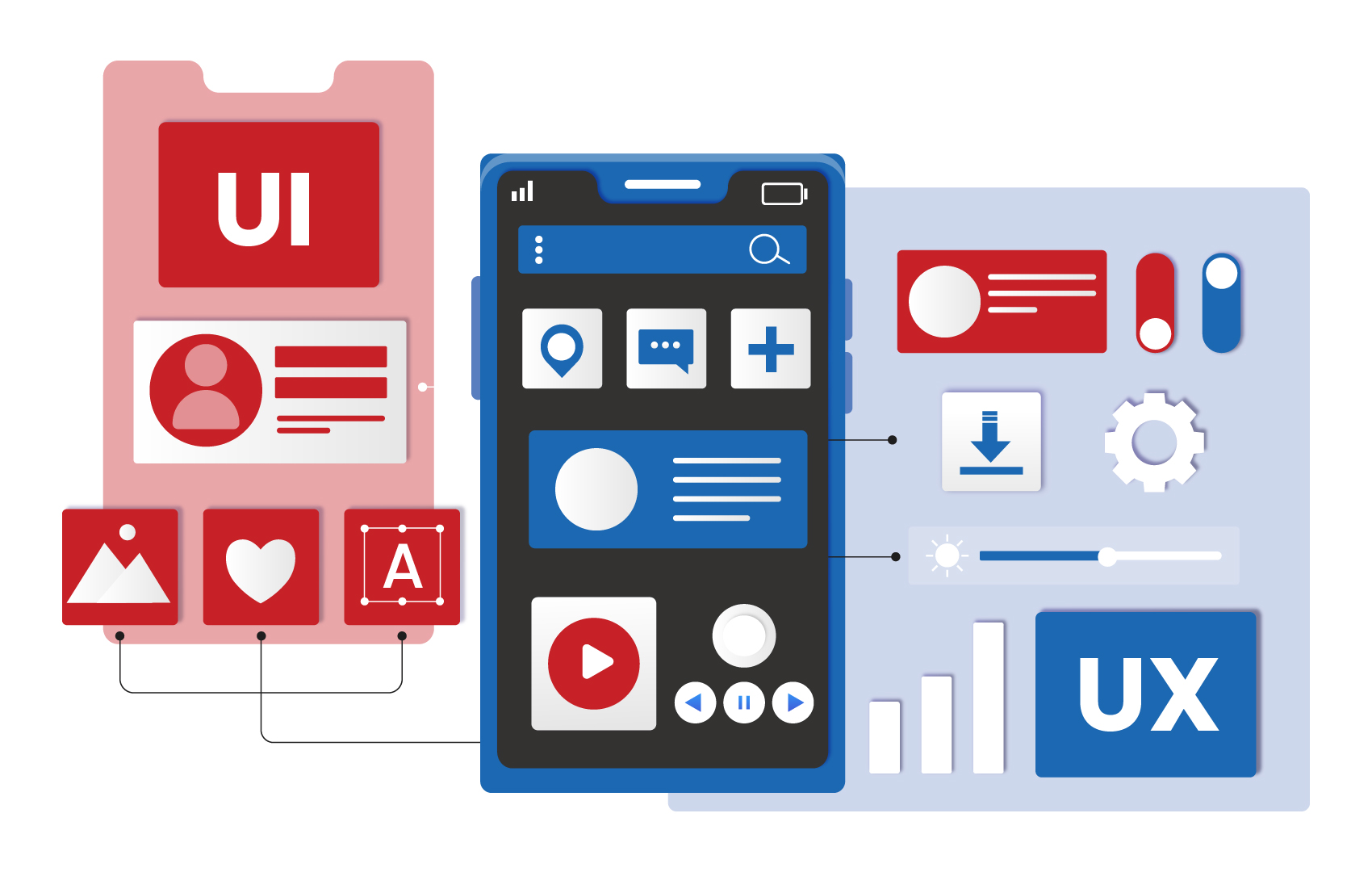
Why You Can’t Put A Value On Great Design
Julian Wallis
13 min read

Great design is one of those things that’s worth its weight in gold, but why is that?
Well, great design is all about solving problems. And the best designers are always looking for ways to improve the user experience. They’re constantly thinking about how to make things more intuitive, more efficient, and more enjoyable.
Good Design or Great Design? 🧐
It’s impossible to put a value on great design. Sure, a graphic designer can create a logo on a dollar-per-hour basis or a fixed amount. Still, the thought process, creativity, and understanding required to consistently deliver exceptional designs are rare in an average designer.
Great design is more than just aesthetics; it’s about creating something that engages users, inspires action, and evokes emotion. It’s about delivering an experience that people will remember long after they’ve left your website or product.

You might look at a design and think it is good enough; however, just because something might even look good, if it doesn’t tick all the boxes to move someone emotionally and empower them to take action, it still hasn’t achieved the real goal. That’s why great design (unlike good design) is about creating something functional and appealing and finding the perfect balance between form and function.
When considering the cost of great design, it’s important to remember that you’re not just paying for the end result but the expertise, experience, and creative vision of the designer who created it. A great designer will deeply understand your business, audience, and goals. They’ll be able to see the big picture and create a design that fits within it. That’s why don’t be afraid to invest in great design. It’s an investment that will pay off in spades.
Differences Between Good Design & Bad Design 📋
When it comes to design, there is a big difference between good and bad. Good design is all about creating a user experience that is both enjoyable and effective, while bad design can make even the most straightforward task frustrating.
Here are some key differences between good and bad design:

#1 Good design is intuitive. Bad design is confusing. ✌️
One of the most important aspects of good design is that it is intuitive. This means that users should be able to figure out how to use your product without reading any instructions or trial and error. On the other hand, bad design can be highly confusing, causing users to give up in frustration.
#2 Good design is aesthetically pleasing. Bad design is an eyesore. 👀
Another critical difference between good and bad design is aesthetics. Good design is pleasing to the eye, while bad design can be an eyesore. This is important because users are likely to enjoy using a product that looks good and is less likely to use an ugly or dated product.
#3 Good design is user-friendly. Bad design is user-hostile. ✂️
Good design is easy to use and navigate, while bad design can be difficult or even impossible to use. This is important because users should not have to struggle to use your product; if they do, they are likely to give up and find another option.
After all, good design is all about creating a positive user experience. Bad design, on the other hand, can make even the most straightforward task frustrating. Keep these differences in mind when designing your products (or when hiring an agency to do the work for you!) — and always aim for great designs!
Differences Between Great Design and Average Design ✊
When it comes to design, there can be a big difference between something that looks great and something that is just average. Of course, beauty is in the eye of the beholder, so what one person may consider a great design may not be seen as such by someone else. However, certain elements tend to make up a great design, no matter who looks at it.
For one, a great design tends to be visually appealing. It will have a certain balance and symmetry, making it pleasing to look at. A great design often excitingly uses negative space, adding to its overall aesthetic appeal.
Another characteristic of a great design is that it is functional. It will serve the purpose for which it was intended, whether to communicate a message or provide a service. A great design will also be user-friendly, meaning that those who interact with it can do so without any difficulty.
A great design is often timeless and will not look dated after a few years. Instead, it will remain fresh and relevant for many years to come.
So what separates a great design from an average one? It all comes down to these key characteristics. If a design has them, it is likely to be considered excellent by those who see it.
Case Study — How Were The Iconic Brand Logos Designed? 👣
It’s hard to imagine a world without logos. They’ve become such an integral part of our lives that we often take them for granted. Yet, have you ever wondered how these iconic logos were designed?
Let’s look at some of the most famous logos and see how they came to be.
The Nike Swoosh is one of the most recognisable logos in the world. Yet, did you know that a student initially designed it for just $35? The student, Carolyn Davidson, was asked to create a logo for Nike by co-founder Phil Knight. He wanted something that conveyed motion and could be printed easily on shoes.

The result was the now-famous Swoosh, which has come to represent Nike’s brand and is one of the most successful logos of all time.
Another iconic logo is the Coca-Cola script. This logo was first introduced in 1886 and designed by bookkeeper Frank Mason Robinson. He wanted something that would be easy to read and remember, and he also wanted to include the company’s name in the logo.

Robinson’s design has changed over the years, but the basic idea has remained the same. And it’s become one of the most recognisable logos in the world.
The Pepsi Globe is another instantly recognisable logo. It was first introduced in 1898, and it has undergone some changes over the years as well. The current version was introduced in 2008 and is a more modern take on the original design.

These are just a few of the most iconic logos in the world. And they all have stories behind them. Yet, at the heart of these iconic designs lies intuitiveness, creativity, and originality — things that separate great designs from the sea of average and duplicated designs.
10 Basic Principles Great Designers Follow 👨🏫
While there is no surefire formula for great design, there are some basic principles that all great designers follow. These principles can help you create designs that are both beautiful and practical.
#1 Simplicity is key. 🔑
When it comes to design, less is almost always more. Trying to cram too much into one design will only make it look cluttered and confusing. A great designer knows how to edit their designs down to the essentials so that the final product is clean and elegant.
#2 Functionality is paramount. 🌌
A good design is pleasing to the eye and easy to use. Great designers understand how people interact with their designs and create accordingly. Their goal is always to create something that is both beautiful and user-friendly.
#3 Attention to detail makes all the difference. 🤔
The little details are what can really make a design stand out. From choosing the perfect font to nailing that perfect alignment, paying attention to the small things can make a big difference in the overall look of your design.
#4 Good design is timeless. ⏱️
The best designs are those that stand the test of time. They don’t rely on trends or gimmicks; instead, they focus on creating something classic and timeless. You can always return to these designs, no matter the current trends.
#5 Great design is all about solving problems. ❓
Design isn’t just about making things look pretty — it’s also about solving problems. A great designer is always thinking about how they can make their designs more efficient and user-friendly. They’re always looking for ways to improve upon their previous work.
#6 Design is a never-ending process. 🏎️
There is always room for improvement, no matter how good your designs may be. Even the best designers are constantly tweaking and improving their work. They understand that design is an ever-changing field and are always trying to stay ahead of the curve.
#7 Good design requires collaboration. 🧑🏿🤝🧑🏿
No designer works in a vacuum – good design always requires collaboration. Whether working with a team of other designers or clients, working well with others is essential. Great designers know how to use feedback to improve their work.
#8 Designers need to be lifelong learners. 🖊️
To be a great designer, one must be a lifelong learner. They must constantly learn new skills and keep up with the latest trends. The best designers are always looking for ways to improve their craft.
#9 Design is about more than just aesthetics. 👁️
While aesthetics are important, they’re not everything. A great design is more than just making things look good — it’s also about creating something functional and user-friendly. Designers need to be able to think outside the box and come up with creative solutions to problems.
#10 There is no one “right” way to design. ✔️
There is no such thing as the “right” way to design — there are only principles that all great designers follow. These principles can help you create designs that are both beautiful and practical. Ultimately, the best way to become a great designer is to simply keep designing.
And When It Comes To UI/UX Design . . . ⭕
Investing in a great UI UX design ensures more success for your products and brand. This also decreases poor feedback and technical errors. Good UX designs reduce the need for continuous experiments, increasing cost efficiency.
Your website is the face of your brand. A lousy UX design will hinder your brand’s growth and rid you of your existing customer base. Hence, it is necessary to create Good UI UX designs.
Websites with good UI/UX design are user-friendly, visually appealing, and easy to navigate. They offer a great user experience by providing relevant information and being easy to use.

A great UI/UX design is essential because it:
- Makes your website user-friendly
- Increases customer satisfaction
- Decreases the number of support requests
- Encourages customer loyalty
- Helps you stand out from the competition
Creating a great UI/UX design is essential to the success of your website and business. It ensures that users have a positive experience on your site, which leads to increased satisfaction and loyalty. If you want your business to succeed, you should invest in a good UI/UX design.
What Makes A Great UI/UX Design? 🗒️
Creating a great UI/UX design isn’t easy. Many elements must be considered, from the overall layout and structure to the tiniest details like colour schemes and font choices. When everything comes together perfectly, the result can be truly incredible.
So what makes a great UI/UX design?
Here are just a few of the critical elements:
#1 Layout and Structure 📋
How your website or app is laid out is essential for usability and aesthetics. Everything should be easy to find and use, with a logical flow that makes sense. The overall look should be clean and uncluttered, with plenty of white space to help users focus on what’s important.
#2 Design Elements 🔖
Every great design uses basic design principles like balance, contrast, and repetition. These elements create visual interest and draw the user’s eye to the most critical parts of the interface.
#3 Colour Scheme 🎨
Carefully chosen colour schemes can significantly affect your design’s overall look and feel. They can also guide users substantially through your interface or highlight specific areas.
#4 Typography 🗚
The right font choices can help to create a unique identity for your website or app and can also play a role in assisting users in navigating your interface. Different fonts can be used for various purposes, such as headings, body text, or buttons.
These are just a few elements of creating a great UI/UX design. The result can be truly unique when these things come together just the right way.
Is Hiring a Freelance UI/UX Designer a Good Idea? 💭
If you’re like most people, when you think of hiring a freelance UI/UX designer, you probably think of sites like Upwork or Fiverr. And while there’s nothing wrong with using those platforms to find talent, there are some things you should keep in mind before hiring someone from one of those sites.
For starters, the quality of designers on those sites can vary greatly. There are some incredibly talented designers on those platforms, but there are also many inexperienced or unqualified ones. So how do you know if you’re getting a good designer? It can be tough to tell.
Another thing to remember is that designers on those platforms often work for meagre rates. While that might save you money in the short term, it could cost you more in the long run if the designer doesn’t do a good job or doesn’t meet your expectations.
So, what’s the bottom line? If you’re considering hiring a freelance UI/UX designer, do your research and only work with designers you trust. Otherwise, you might end up regretting your decision.
Here’s what we think: You can take your chances on the cheaper options. Still, if you want something with experience and qualifications to deliver your results (even though costlier), you need to look further into this.
Final Words — Make Your UI/UX Design Intuitive 🖋️
A great UI/UX design is always intuitive. That means it’s instinctively easy for users to understand and use. The key to making a UI/UX design more intuitive is to think about how users will interact with it. Put yourself in their shoes and think about what they need to do to accomplish their goals. Then, make the design as straightforward as possible.
Using familiar conventions is one way to make a UI/UX design more intuitive. For example, most people are used to seeing a shopping cart icon when browsing an online store. Users may have trouble understanding your design if you deviate from this convention.
It’s also essential to provide clear labels and instructions. Users should never have to guess what a button does. If they do, they’re likely to give up and move on to something else.
Remember that feedback is crucial in UI/UX design. Users need to know what’s happening at every step, providing visual cues and error messages if something goes wrong. These tips can make your UI/UX design more intuitive and user-friendly.
If you need help understanding what goes in the design process (or perhaps you want to hire a team of expert UI/UX designers), feel free to book a discovery chat with us. We’d love to hear from you!
Topics
Published On
July 28, 2022

